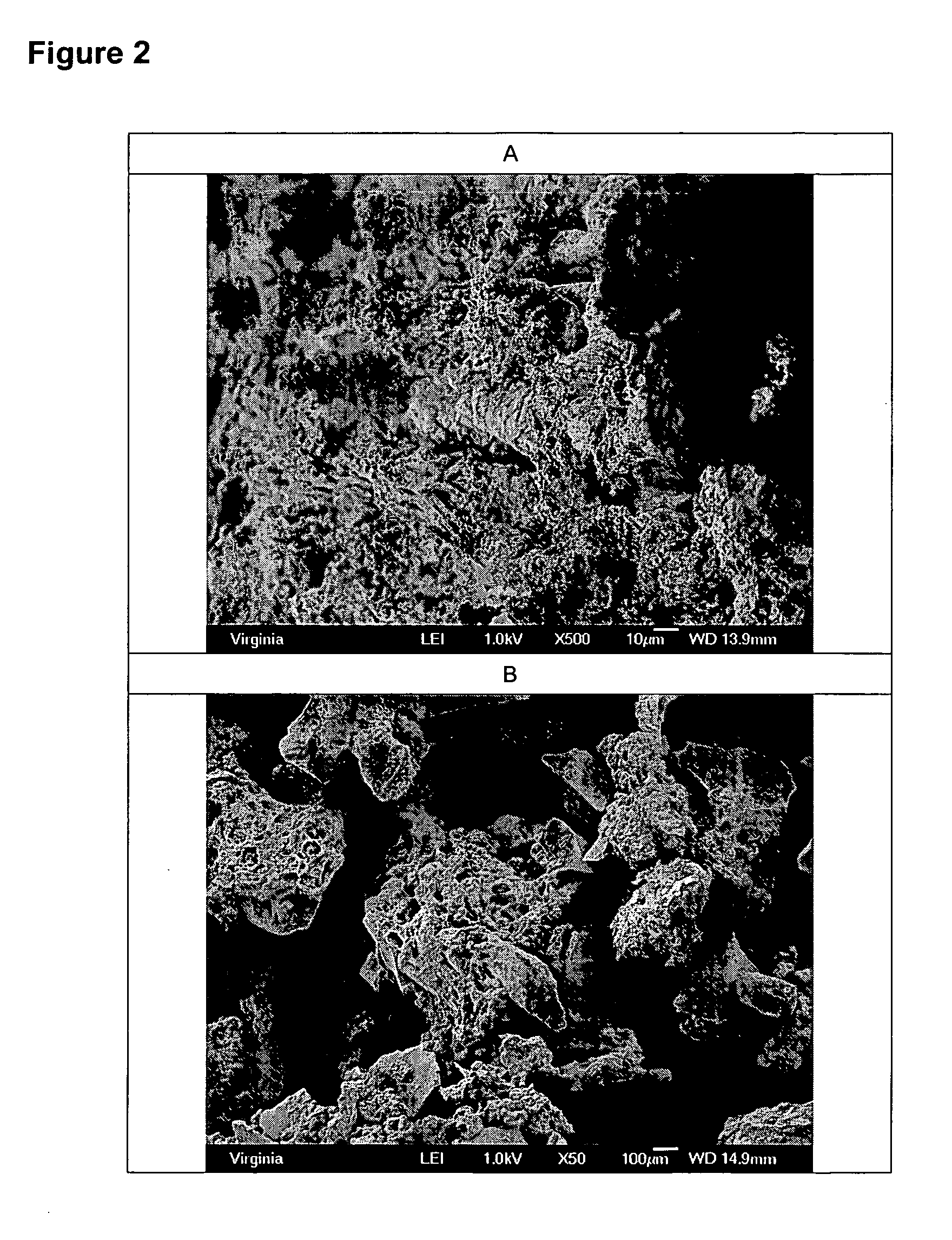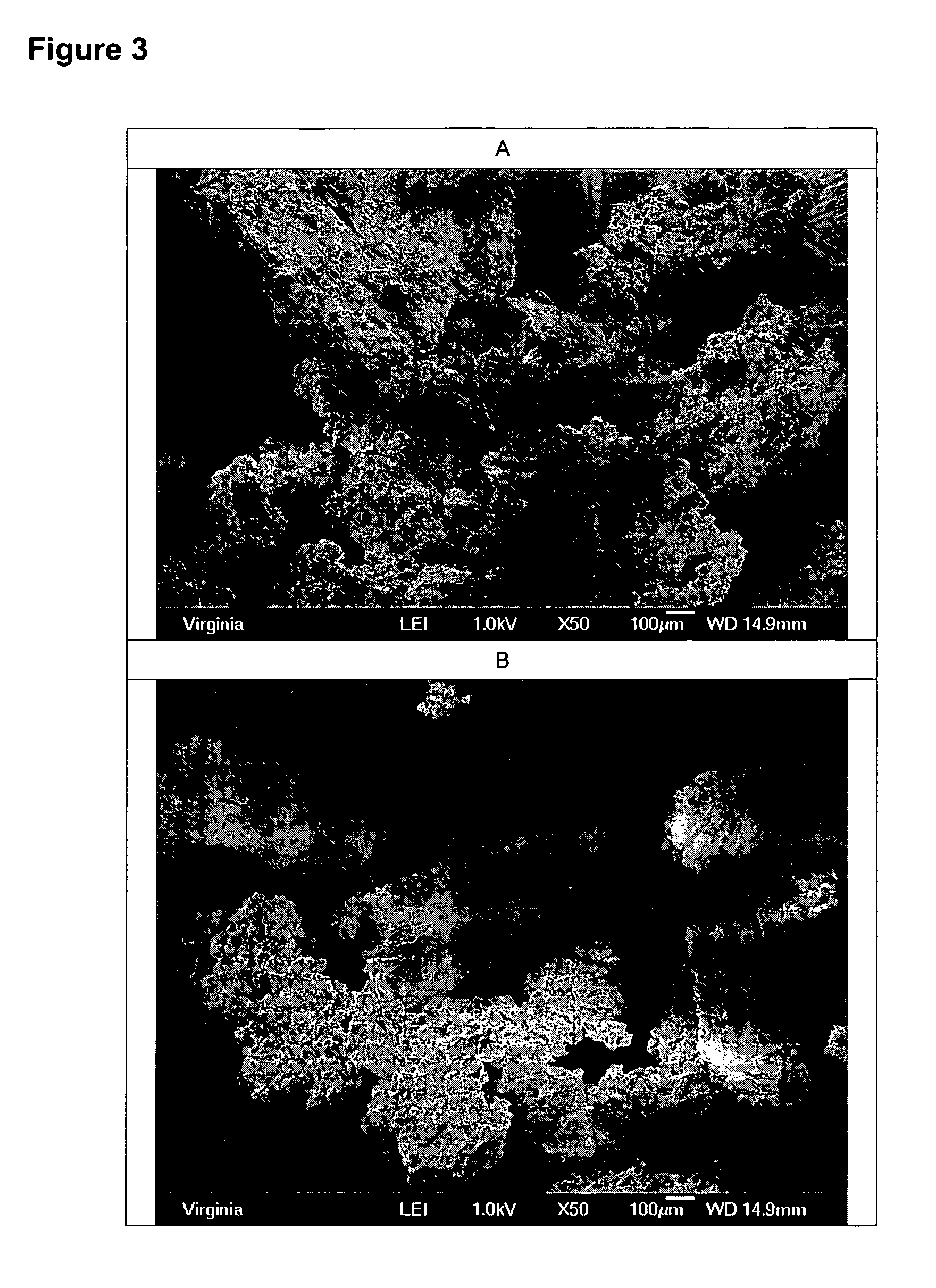Compositions for repairing bone and methods for preparing and using such compositions
a technology for repairing bones and compositions, applied in the field of compositions for repairing bones, to achieve the effects of improving properties, improving flow and syringability, and high surface area
- Summary
- Abstract
- Description
- Claims
- Application Information
AI Technical Summary
Benefits of technology
Problems solved by technology
Method used
Image
Examples
example 1
[0039] A solution of porcine gelatin (12 g) in water (388 g) was stirred in a polypropylene pitcher using a Lightnin Mixer with a two-blade impeller. To this was added bovine tendon collagen (15.8 g). To this was added a total of 1900 ml of isopropyl alcohol. After precipitate formed, the stirring was stopped and the particles were allowed to settle. Supernatant was decanted and the particulate material was rinsed with 300 ml of isopropyl alcohol. Decanting and rinsing were repeated again. After final decant, the curd-like particles were dried at room temperature under vacuum overnight. A total of 22.1 g of finely divided dry curd-like particles were collected. Moisture content, as determined by loss on heating, was 7.8% mass / mass. Approximately 1.4 g was placed in a 10 ml syringe and wetted with 1 ml saline, easily syringable after reconstitution.
example 2
[0040] A solution of porcine gelatin (6 g) in water (194 g) was stirred in a polypropylene pitcher using a Lightnin Mixer with a two-blade impeller. To this was added calcium sulfate dihydrate particles (12.35 g; sieved to 1-3 mm size range). To this was added a total of 900 ml of isopropyl alcohol. After precipitate formed, the stirring was stopped and the particles were allowed to settle. Supernatant was decanted and the particulate material was rinsed with 200 ml of isopropyl alcohol. Decanting and rinsing were repeated again. After final decant, the curd-like particles were dried at room temperature under vacuum for 5.5 hours. A total of 22.1 g of finely divided dry curd-like particles were collected. Moisture content, as determined by loss on heating, was 15.8% mass / mass.
example 3
[0041] A solution of porcine gelatin (3 g) in water (100 g) was stirred in a 600ml pyrex beaker using a magnetic stir bar. To this was added Bioglass® 45S5 bioactive glass particles (6.0 g; sieved to 90 to 710 micron size range). To this was added a total of 350 ml of isopropyl alcohol. After precipitate formed, the stirring was stopped and the particles were allowed to settle. Supernatant was decanted and the particulate material was rinsed with 150 ml of isopropyl alcohol. Decanting and rinsing were repeated again. After final decant, the curd-like particles were dried at room temperature under vacuum overnight. A total of 8.3 g of finely divided dry curd-like particles were collected. Moisture content, as determined by loss on heating, was 6.1% mass / mass.
[0042] The particles are shown in FIG. 2A and B and appeared several hundred microns in size, with regions of incomplete gelatin coating attached to the surface. The particles mixed easily in a plastic weighboat to form a sticky...
PUM
| Property | Measurement | Unit |
|---|---|---|
| Size | aaaaa | aaaaa |
| Size | aaaaa | aaaaa |
| Weight ratio | aaaaa | aaaaa |
Abstract
Description
Claims
Application Information
 Login to View More
Login to View More - R&D
- Intellectual Property
- Life Sciences
- Materials
- Tech Scout
- Unparalleled Data Quality
- Higher Quality Content
- 60% Fewer Hallucinations
Browse by: Latest US Patents, China's latest patents, Technical Efficacy Thesaurus, Application Domain, Technology Topic, Popular Technical Reports.
© 2025 PatSnap. All rights reserved.Legal|Privacy policy|Modern Slavery Act Transparency Statement|Sitemap|About US| Contact US: help@patsnap.com



